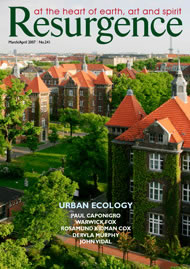THIS IS BOTH a review and, perhaps more importantly, a story about a most unusual book. First, the story. I have in front of me a large coffee-table volume containing a colourful photo essay on Bhutan; but this is just the small sibling of the largest book ever produced. In its original form the pages open to five feet by seven feet, it weighs nearly 150 pounds, and it holds a Guinness World Record. It originates from the MIT (Massachusetts Institute of Technology) Media Lab, home of pioneering digital technology. With the intention of researching the use of digital photography for expedition use, a team of eleven principal photographers amassed a collection of some 60,000 images over four expeditions, some of which are available at www.friendlyplanet.org/archive. The cost of framing and the difficulty of finding locations to exhibit the images, along with the gift of an enormous inkjet printer, led to the idea of a very large book – an exhibition in book form. This called for new technological solutions at every stage, and was carried out by the oldest bookbindery in the world, Acme Bookbinding of Boston. Financial help for the project came from some very major players: Amazon, Apple, Hewlett-Packard, FedEx, Microsoft, MIT and the Bill & Melinda Gates Foundation.
Now for the book itself. Bhutan has recently become known for its insistence on the importance of GNH – Gross National Happiness – rather than GNP – Gross National Product. It is the last Buddhist kingdom in the Himalayas, and devout home to a form of Tibetan Buddhism that pervades its daily life. It lies to the south of Tibet and the east of Nepal and presents a breathtaking mixture of landscape and peoples, tropical jungle and high mountains, simplicity and sophistication, monks and laypeople. For the past generation it has been forging a unique and careful path from a traditional kingdom to a contemporary and democratic future. The book describes a journey of two young Bhutanese through their land by helicopter and road, and in so doing takes the reader, too, on a colourful journey across a very beautiful land. This gives an introduction to the intricate architecture, the rich textiles and the important festivals of a land which, whilst statistically poor, seems to any visitor extraordinarily rich in life values. The sometimes over-saturated colour of the images seems unnecessary to enhance what is naturally vibrant, and the text is sadly not as informative or as imaginative as the images. Nonetheless this is a wonderful introduction to a very special place. The sensitive images of the people tell us much about the country, the equal position of women and men in the society and, certainly, its successful pursuit of GNH.
To return to the story. Some eighty or so copies of the giant book have been distributed around the globe. If you can get to Edinburgh, the National Library of Scotland has a copy, though at the time of writing it is not yet on display. The smaller version may be obtained for a donation of $100 from www.amazon.com – a donation of which Amazon takes no part. The publisher, Friendly Planet, is a non-profit charity set up to raise funds for education in remote and rural parts of the world, and purchases of this book will have the added benefit of supporting educational projects in Bhutan.








